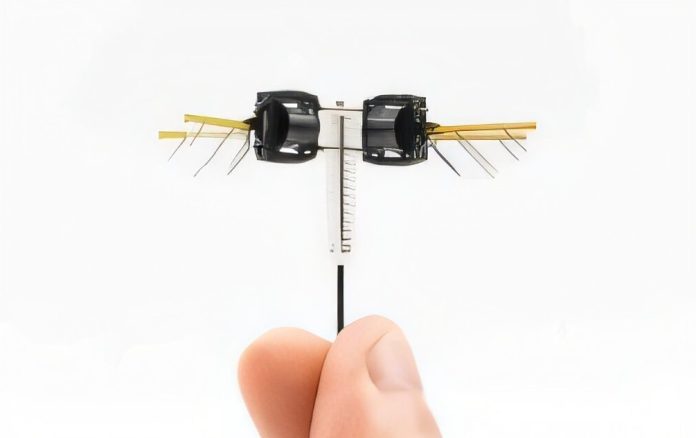
A team of researchers from MIT has created a small but powerful robot that can jump like an insect and move across rough and slippery surfaces.
This tiny robot is smaller than your thumb and weighs less than a paperclip, yet it can jump over tall objects and carry loads up to ten times its own weight.
It uses far less energy than flying robots and could one day help in real-life rescue missions, such as searching through collapsed buildings after an earthquake.
Small robots are useful in places that are too dangerous or narrow for people or bigger machines. However, most tiny robots either crawl or fly.
Crawling robots often get stuck when facing tall barriers or slippery slopes.
Flying robots, on the other hand, use a lot of energy, which limits how far they can go before needing to recharge. The MIT team found a middle ground: a hopping robot that uses jumping to move across tricky terrain while saving energy.
This hopping robot works by using a springy leg to launch itself into the air, and it has four tiny wing-like parts that help it stay balanced and move in the right direction.
These wings don’t make the robot fly but instead guide and control it while it’s in the air.
The robot can jump about 20 centimeters high—four times its own height—and travel forward at about 30 centimeters per second. It can hop across grass, ice, wet glass, and even land safely on a moving drone.
What makes this robot especially impressive is how energy-efficient it is. It uses about 60% less energy than flying robots of the same size.
This is thanks to its springy leg, which works like the spring in a click-top pen.
When the robot lands, the spring stores energy from the fall and uses it to push the robot back into the air. The wing modules help make up for any energy loss and keep the robot upright.
The robot’s flapping wings are powered by soft, muscle-like materials that are strong enough to handle repeated landings without breaking. In fact, the same robot was used in all the tests without needing any repairs.
A smart control system helps the robot know how to move during each jump. Using outside motion sensors, the robot figures out where it will land and then adjusts its wings to prepare for the next jump.
The robot proved to be very durable and adaptable. It could easily move from one surface to another, such as from grass to wet glass.
The smart controller adjusts the power during jumps, giving more lift when needed, like when moving across thick grass. The robot is also agile and can do flips in the air without losing balance.
The researchers say the robot can carry heavy loads because of its efficient jumping style. In tests, it carried double its own weight, and there’s potential for it to carry even more.
The biggest limit is not the weight, but how efficient the spring is.
Next, the team hopes to add batteries, sensors, and control systems so the robot can move on its own in the real world. This tiny jumper may one day help in rescue operations, explore hard-to-reach areas, or even work with flying drones to complete difficult tasks.



